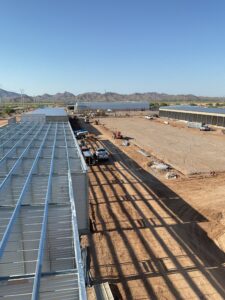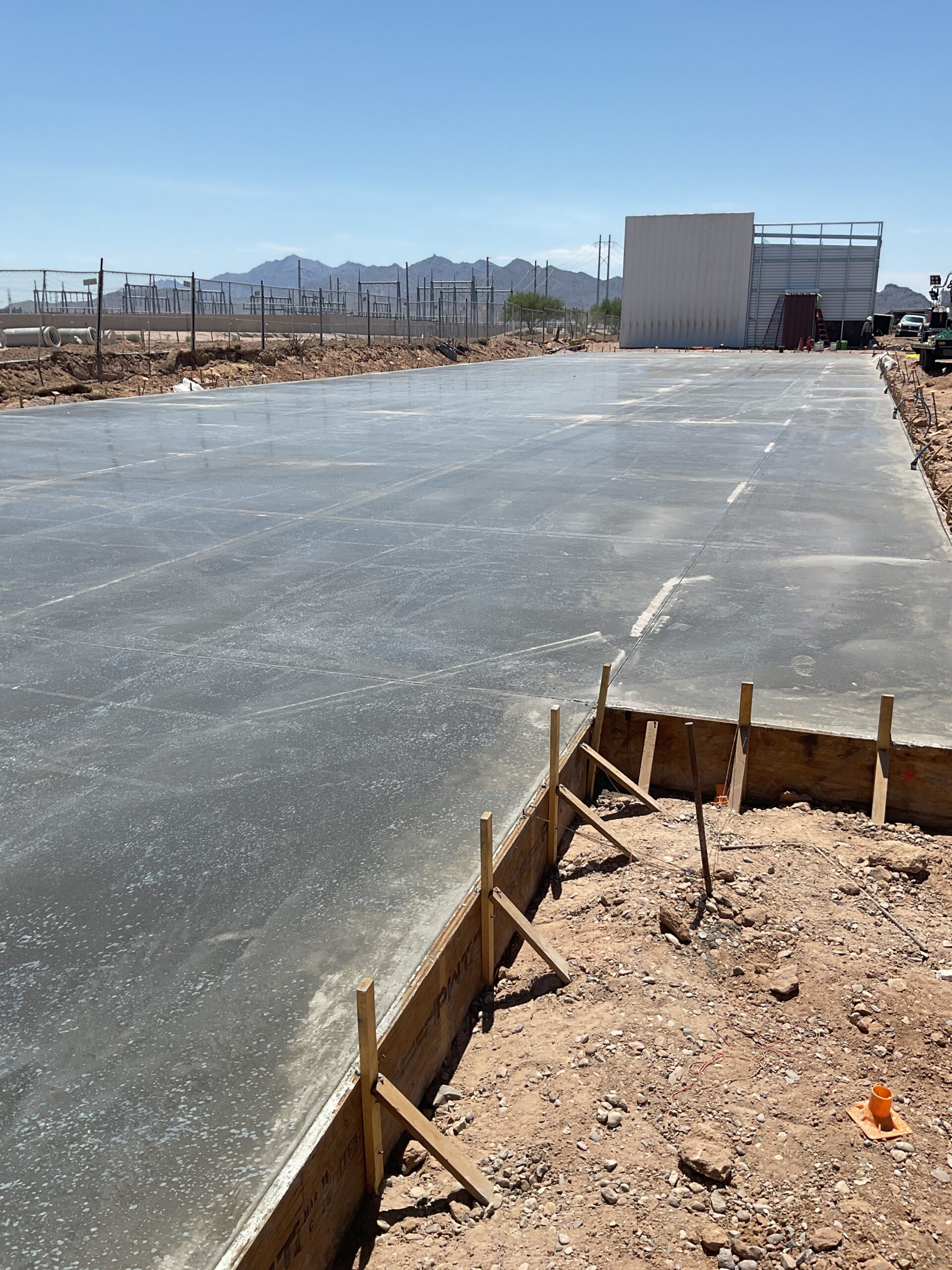Photo: Benson Construction is currently working on a project that includes slab-on-grade and framing for LuxeLockers in Goodyear, Ariz.
By Courtney Dunlap
As construction leaders across the country begin planning for 2026, many are still grappling with the financial strain that has defined much of 2025. While demand for new healthcare, education, and public infrastructure projects remains high, the cost of delivering those projects continues to climb — fueled by inflation, labor shortages, persistent supply chain volatility and the threat of new tariffs on essential materials.
Construction input prices have risen by more than 6% this year, and although overall construction spending is projected to grow, that growth may not keep pace with escalating costs. The result is a squeeze that’s especially difficult for publicly funded projects like schools and hospitals, where budgets are often set months or even years before breaking ground.
Strategies to Mitigate Risk
Despite the uncertainty, there are proactive strategies that construction firms and project owners can adopt to navigate the current climate. Across the industry, there has been a shift away from reactive cost-cutting and toward smarter, more resilient project planning.
One of the most effective ways to mitigate financial risk is through data-driven design. Integrating cost modeling and market analytics early in the design process allows project teams to anticipate and avoid budget overruns before they occur. Whether it’s selecting materials with more price stability, modifying structural layouts to reduce waste, or forecasting long-term operating costs, data can illuminate opportunities that aren’t always visible in traditional planning.
The construction industry is also seeing significant value in localizing material sourcing. National and global supply chains remain vulnerable to delays and pricing volatility, making regional supplies an increasingly attractive option. By working with local vendors, builders can reduce transportation costs, cut down on lead times, and gain greater visibility into potential disruptions.
Sustainability Considerations

Sustainability is also playing a growing role not only in reducing environmental impact, but in helping manage long-term project costs. High-performance building systems, energy-efficient designs, and environmentally responsive construction methods can all contribute to long-term savings, while also unlocking access to green financing, tax credits, or public incentives. In many states, sustainable design is now a requirement, but even in jurisdictions where it’s not mandated, more owners are recognizing the return on investment.
Off-site construction methods like modular or prefabricated components are emerging as a powerful way to boost efficiency and control project costs. By shifting some construction processes into factory settings, companies can significantly reduce waste, improve quality, and shorten build times. While not a fit for every project, these methods have proven especially valuable in school and healthcare construction, where speed and reliability are crucial.
Layered across all of this is a growing emphasis on lean construction practices. Built around the principles of collaboration, efficiency, and adaptability, lean methods help teams streamline workflows, reduce rework, and make smarter use of limited labor and materials. In today’s climate with unpredictable supply chains and rising costs now part of the norm, these methods are no longer niche — they’re essential.
Looking to the Future
Ultimately, the firms best equipped to manage rising costs are those that approach construction holistically: not just as a linear process of drawings to buildings, but as a dynamic system of decisions, tradeoffs, and real-time information. That means empowering project teams with the tools and authority to adapt, engaging owners early in cost-related discussions, and fostering a culture where efficiency and innovation go hand in hand.
While 2025 has delivered its share of challenges, it has also underscored the importance of building smarter. Cost pressures may persist, but with the right strategies in place, construction leaders can continue to deliver value-driven, community-focused spaces — without compromising on quality or vision.
As cost pressures reshape the construction landscape nationwide, Benson Construction stands ready to help public and private partners plan and build with greater confidence and efficiency.
Courtney Dunlap, President, Benson Construction. For more information or project inquiries, visit www.benson-con.com/.


